Launching a successful search campaign might feel overwhelming, but it's achievable with the right strategies, tools, and focus. Whether you're an experienced marketer or starting, mastering these techniques can help you generate more leads or sales. This guide will walk you through the step-by-step process of creating a high-performing search campaign.
How to find the right keywords
Effective keyword research lays the foundation for a successful search campaign. It's not just about identifying popular search terms but understanding which ones align with your business goals and audience intent.
Step 1: Brainstorm Keywords
Start with a spreadsheet to list potential keywords. Think like your customers—what phrases would they use to find your product or service? Consider:
Industry Jargon: Commonly used terms in your niche.
Seasonal Trends: Keywords relevant to specific times of the year.
Niche Keywords: Specific phrases that cater to smaller, focused audiences.
You can always use ChatGPT for help in this initial phase.
Step 2: Leverage Google Ads Planner
Google Ads Planner is a free, essential tool for discovering high-value keywords. You can find it in the left site Tools > Planning > Keyword Planner.
In the "Discover New Keywords" section of Google Ads Planner, you can search for keywords or analyze a website for insights. This tool provides essential data to help you refine your strategy and gain a competitive edge.
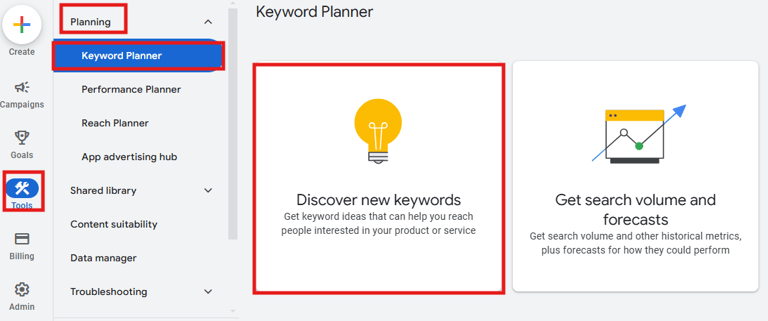

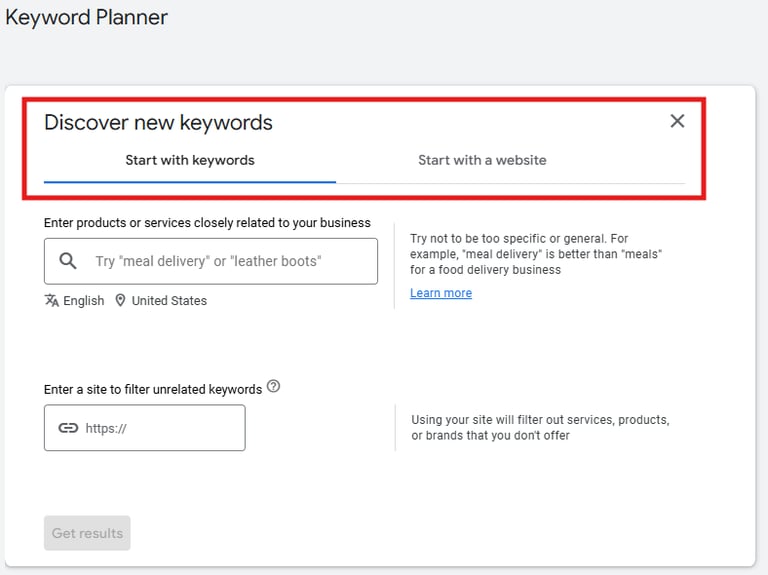

Pro Tip: Unlock Competitor Insights
Take advantage of Google Ads Planner's ability to analyze your competitor's website. Input their URL, and the tool will reveal their top-performing keywords. This helps you:
Understand which terms drive traffic to their site.
Identify gaps or opportunities to outmaneuver competitors.
Good News: Google Ads Planner is free; you must open a Google Ads account to access it. This makes it an accessible and powerful tool for businesses of all sizes. Spend a reasonable amount of time in this step.
Step 3: SemRush – Advanced Keyword Analytics
SemRush is a freemium tool that provides in-depth keyword insights, making it essential for creating a data-driven search campaign. In the free version, you can make up to 10 requests. Here's how to make the most of its features:
Explore Keyword Magic Tool
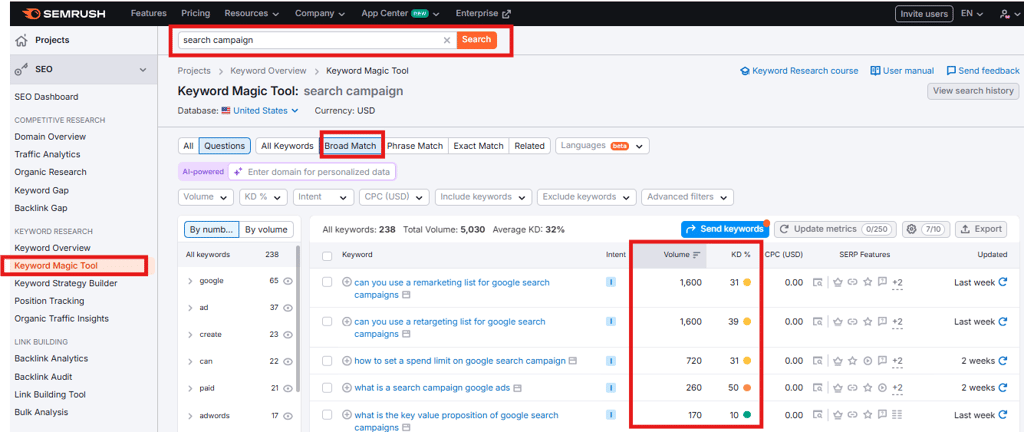

The Keyword Magic Tool allows you to analyze search intent to ensure it aligns with your goals, review monthly search volume to assess traffic potential and evaluate keyword difficulty to determine ranking feasibility.
Choose the Right Keywords for Your Goals
When selecting keywords, consider both search volume and difficulty. Here's a guideline:
For smaller clients with low monthly sessions (e.g., around 100 sessions per month), targeting a keyword with 1,000 monthly searches may be ideal
For larger clients with high traffic (e.g., around 100,000 sessions per month), aim for keywords with higher search volumes to match their scale.
Align keyword difficulty with your client's Authority Score (AS). A higher AS enables targeting more competitive terms, while a lower AS may necessitate focusing on less competitive keywords.
Pro Tip: A well-balanced mix of high-volume, low-difficulty keywords can maximize visibility and ranking potential.
Uncover Hidden Opportunities with Keyword Gap Analysis
The SEMrush Keyword Gap feature allows you to compare your keyword strategy with those of your competitors.

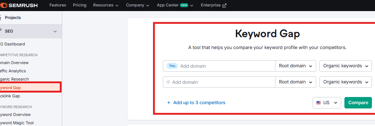
By entering a competitor's domain, you can identify keywords they rank for that you do not, overlapping keywords where you can improve your ranking positions and untapped opportunities to outperform your competitors.
SEMrush bridges the gap between competitive analysis and actionable insights, helping you identify high-impact keywords and refine your strategy. To build a robust and competitive keyword list, spend time thoroughly analyzing these features.
With SEMrush, you're not just collecting data but creating a roadmap for the success of search campaigns.
Step 4: Validate Search Volume and Intent
Save time on keywords with low or zero search volume. Use tools like Google Ads and SEMrush to confirm that your selected keywords:
Have Meaningful Volume: Aim for keywords that match your website's traffic scale.
Match Search Intent: Prioritize commercial or transactional keywords if your goal is sales.
The goal of this process is to identify the right keywords that have good search volume and intent. Once you have prepared a list of potential keywords, the next step is to check their search volume. You can do this by using Google Ads Keyword Planner, which allows you to select the keywords with the highest search volumes.
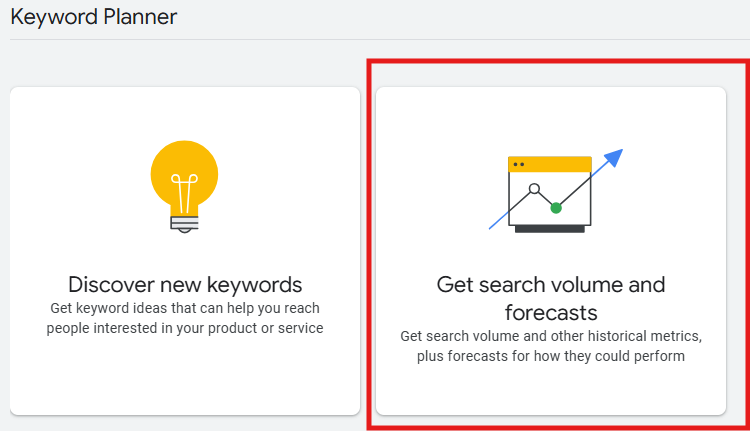

Next, you need to understand their intent. You can do this in bulk using SemRush with up to 100 keywords.

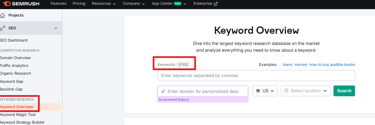
When selecting the right intent for your goals, it's important to focus on keywords that align with your objectives. If your aim is to sell, prioritize keywords with commercial or transactional intent. Semruth is a freemium tool that allows you to make up to 10 requests daily in its free version. Enjoy using it!
Grouping Keywords
Once you've compiled a robust keyword list, the next step is to group them strategically. Organizing your keywords into meaningful categories ensures that your ads are relevant and practical.
For example, if you're selling fitness equipment, you can group keywords by product type. It's not advisable to mix unrelated categories, such as 'television' and 'chairs'; instead, keep them separate.
Proper grouping simplifies campaign management and improves ad relevance. This can lead to lower costs, increased click-through rates (CTR), leads, and significant sales.
Writing the Right Copies
Your ad copy is the first impression your audience gets. Crafting compelling and targeted messaging can make all the difference in driving clicks and conversions.
Titles
Your ad title is critical to capturing attention. Include your primary keyword and keep it concise yet engaging. For instance, instead of “Buy Treadmills,” use something like “Top-Quality Treadmills | Free Shipping!”
Descriptions
The description expands on your offer. Focus on value propositions, such as discounts, free trials, or benefits of your product/service. Ensure the tone matches your brand voice and encourages action.
Call to Action
Every ad needs a strong call-to-action (CTA). Use phrases like “Shop Now,” “Get Your Free Quote,” or “Sign Up Today” to create urgency and direct the audience toward the next step.
Conclusion
To prepare a successful search campaign, it's essential to conduct thorough keyword research, organize your campaign effectively, and craft compelling ad copy. By following these steps and utilizing the right tools, you can create campaigns that perform well and deliver measurable results.
Now is the perfect time to implement these tips and watch your business thrive in the competitive world of search advertising.
After you've done all this, it is essential to maintain consistent optimization. These strategies will simplify your next round of optimizations.
Need assistance? BeCare Digital specializes in marketing, creativity, and strategy. We can guide and support you every step of the way.



